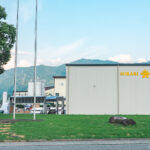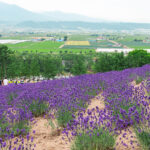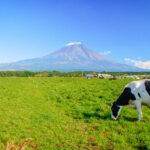This post may contain affiliate links. Please read our disclosure policy.
Visit Daio Wasabi Farm in Azumino to experience natural beauty, hands-on farming history, and a glimpse into Japan’s wasabi culture.
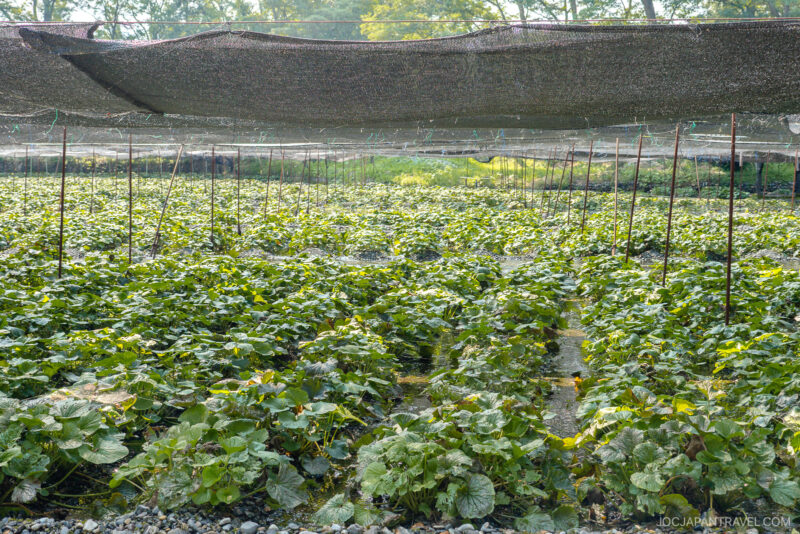
What Is Daio Wasabi Farm?
Daio Wasabi Farm is the largest wasabi farm in the world, covering about 40 acres in Azumino City, Nagano Prefecture. Founded in 1915, it produces more than 100 tons of wasabi each year—around 10% of Japan’s total supply.
The farm is open year-round, free to enter, and combines scenic walking paths, historic watermills, and plenty of wasabi-themed food.
Why Azumino Is Ideal for Wasabi
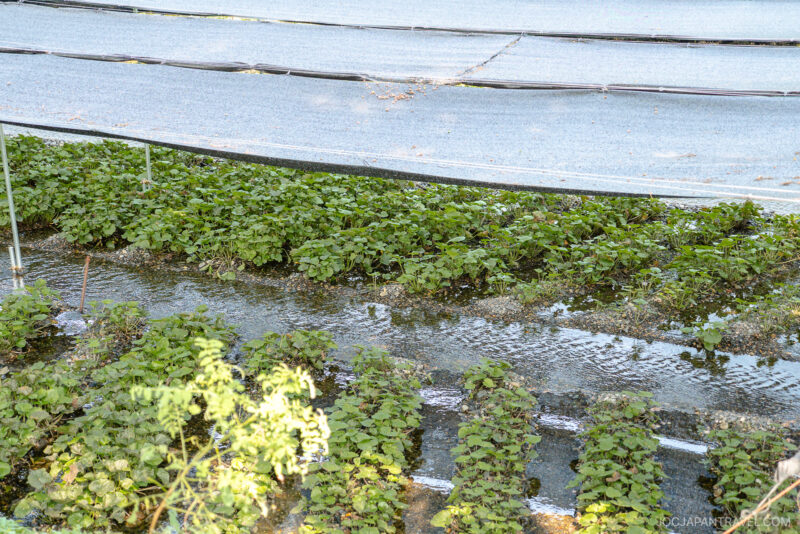
Wasabi is one of the hardest crops to cultivate. It requires pristine, cold water, mild weather, and constant shade. At Daio Wasabi Farm, snowmelt from the Japanese Alps flows directly through gravel beds, creating the perfect growing conditions. Rows of plants are covered by black mesh to protect them from strong sun. Even in summer, the water rushing through the channels feels icy cold—proof of its alpine origin.
Instead of being grown in soil, the wasabi here thrives in beds of small stones with flowing water. This method helps the plants develop their distinct sharpness and sweet aftertaste.
Real Wasabi vs. Imitation
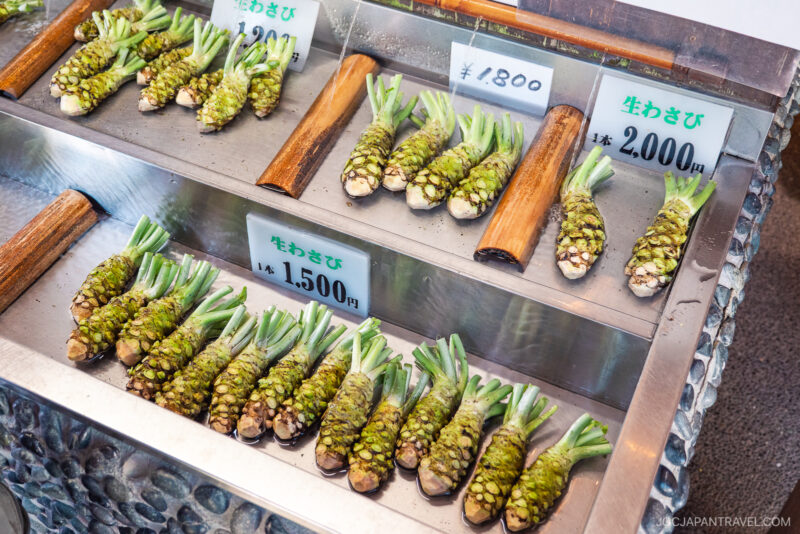
Did you know that most “wasabi” served outside Japan is actually just horseradish mixed with mustard and dyed green?
Real wasabi comes from the plant’s rhizome and takes over a year to grow. The flavor is something special. Freshly grated wasabi has a gentle, fragrant heat with a subtle sweetness, very different from the sharp punch of the imitation paste. It’s a taste you’ll never forget once you try it straight from the farm.
What to See at Daio Wasabi Farm

One of the farm’s most scenic highlights is the cluster of traditional watermills along the river. These charming structures appeared in Akira Kurosawa’s film Dreams (“Village of the Watermills”). Visitors can stroll the riverside paths, enjoy koi-filled ponds, and pause at shaded viewing decks overlooking the wasabi fields.
During warmer months, you can also take a short raft ride along the crystal-clear waterways for an extra fee. It’s a relaxing way to appreciate the setting from the water.
What to Eat: Wasabi Everything
Food is a big part of the visit. Around the farm you’ll find a restaurant, cafes, and stalls offering all kinds of wasabi dishes. We tried the wasabi ice cream, which was creamy with just a gentle tingle of heat. Other specialties include:
- Wasabi soba noodles
- Wasabi rice bowls
- Wasabi croquettes
- Wasabi pickles and snacks
We also picked up some wasabi-flavored pickles to bring home.
How to Get to Daio Wasabi Farm
By Train
From Tokyo, take the JR Azusa Limited Express to Matsumoto or Hotaka. If you arrive at Hotaka Station, take a 10 minute taxi to the farm. If you arrive at Matsumoto Station, ride the JR Oito Line to Hotaka Station. Trains on this line take about 30 minutes.
By Car
From Matsumoto City, drive about 30 minutes to the farm.
Is Daio Wasabi Farm Worth Visiting?
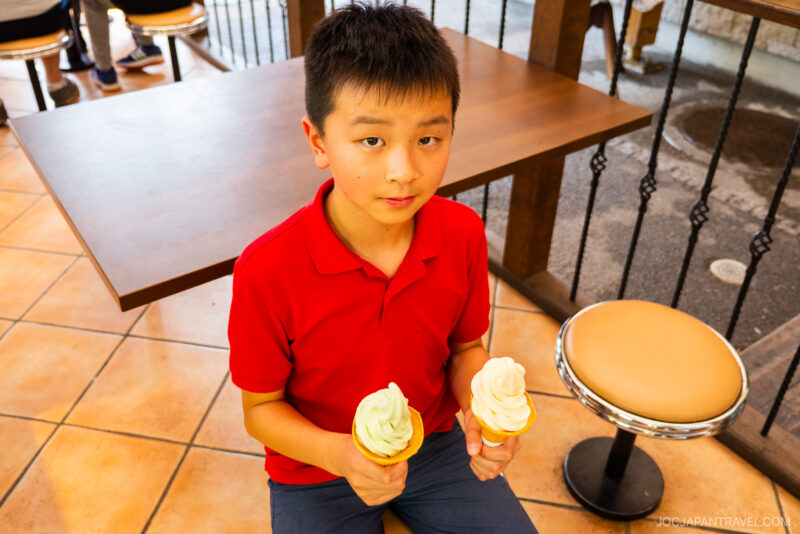
If you love Japanese food, agriculture, or scenic countryside, this farm is worth a stop. It combines education, fun photo spots, and unique dining in one place.
Families will enjoy the open-air walkways and quirky wasabi snacks, while food enthusiasts will appreciate learning about this rare ingredient. And since admission is free, it’s an easy addition to any Nagano itinerary.
More to Explore Nearby
Once you’ve toured the wasabi fields, there are several great spots nearby:
- Matsumoto Castle (松本城) – One of Japan’s original castles with striking black walls and panoramic city views.
- Hotaka Shrine (穂高神社) – A historic shrine surrounded by forest, just minutes from Hotaka Station.
- Azumino Chihiro Art Museum – A museum dedicated to beloved children’s illustrator Iwasaki Chihiro.
- Lake Suwa (諏訪湖) – A scenic lake known for hot springs, shrines, and seasonal fireworks.

